Changing nature of competition : collaboration vs competition


Changing nature of competition : collaboration vs competition MKT5112 Emerging themes in marketing Instructor: Dr. Bulent Dumlupinar Ordabayev Saniyaz 20142321
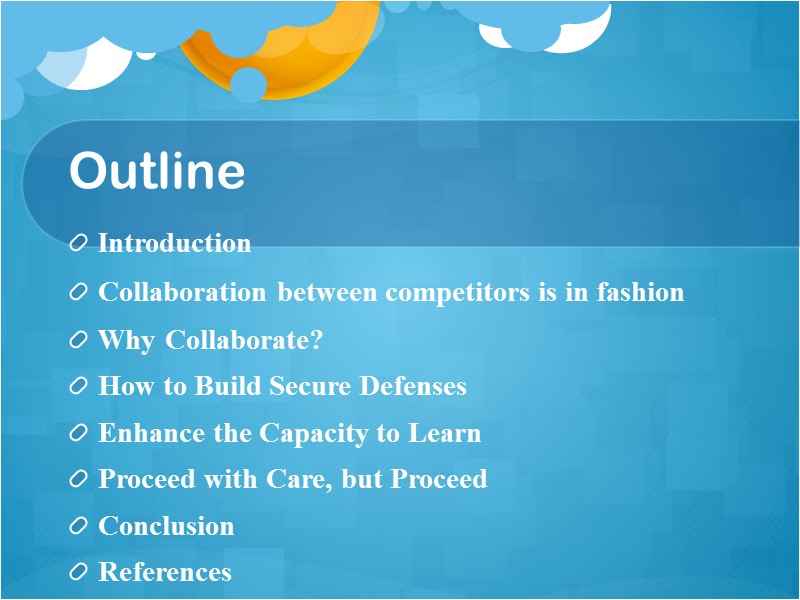
Outline Introduction Collaboration between competitors is in fashion Why Collaborate? How to Build Secure Defenses Enhance the Capacity to Learn Proceed with Care, but Proceed Conclusion References

Introduction In the coming years, there is a strong case to be made that the fittest will be the ones who know how to collaborate. Great collaborators, ironically, will be the best competitors.
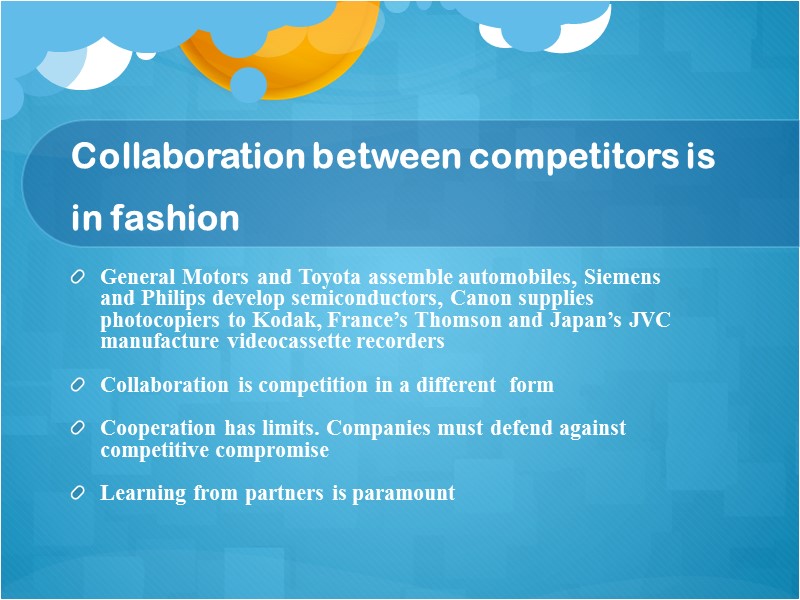
Collaboration between competitors is in fashion General Motors and Toyota assemble automobiles, Siemens and Philips develop semiconductors, Canon supplies photocopiers to Kodak, France’s Thomson and Japan’s JVC manufacture videocassette recorders Collaboration is competition in a different form Cooperation has limits. Companies must defend against competitive compromise Learning from partners is paramount
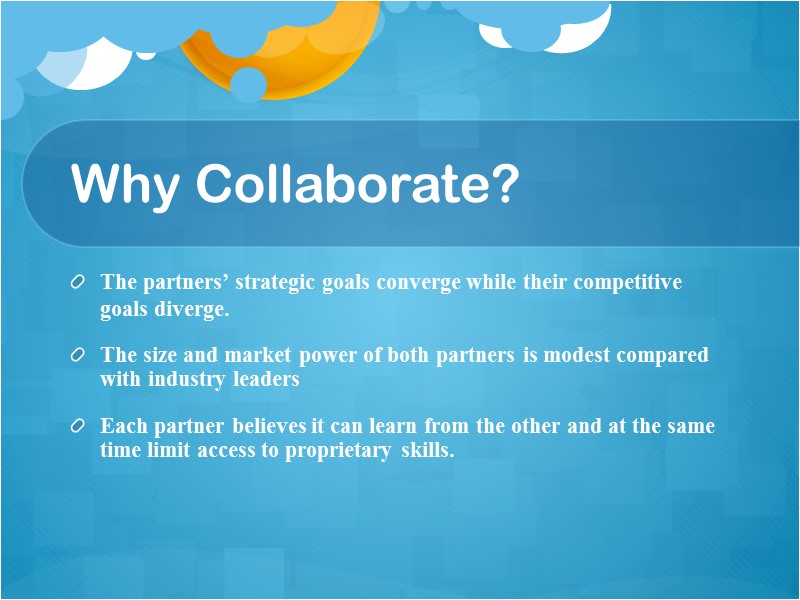
Why Collaborate? The partners’ strategic goals converge while their competitive goals diverge. The size and market power of both partners is modest compared with industry leaders Each partner believes it can learn from the other and at the same time limit access to proprietary skills.

How to Build Secure Defenses For collaboration to succeed, each partner must contribute something distinctive: basic research, product development skills, manufacturing capacity, access to distribution
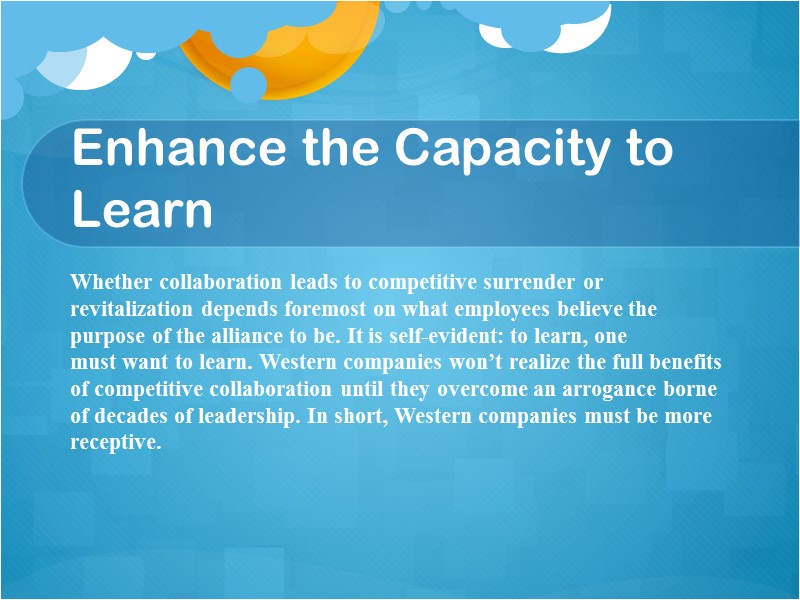
Enhance the Capacity to Learn Whether collaboration leads to competitive surrender or revitalization depends foremost on what employees believe the purpose of the alliance to be. It is self-evident: to learn, one must want to learn. Western companies won’t realize the full benefits of competitive collaboration until they overcome an arrogance borne of decades of leadership. In short, Western companies must be more receptive.
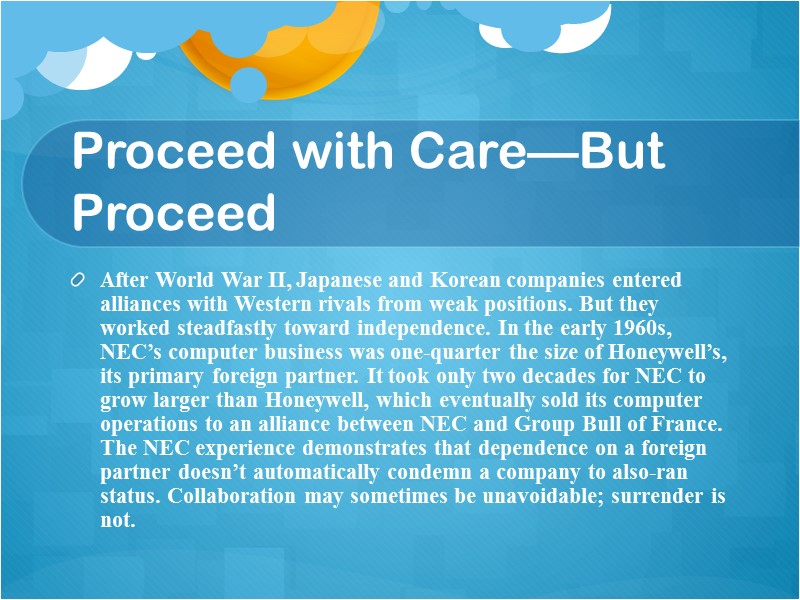
Proceed with Care—But Proceed After World War II, Japanese and Korean companies entered alliances with Western rivals from weak positions. But they worked steadfastly toward independence. In the early 1960s, NEC’s computer business was one-quarter the size of Honeywell’s, its primary foreign partner. It took only two decades for NEC to grow larger than Honeywell, which eventually sold its computer operations to an alliance between NEC and Group Bull of France. The NEC experience demonstrates that dependence on a foreign partner doesn’t automatically condemn a company to also-ran status. Collaboration may sometimes be unavoidable; surrender is not.

Conclusion

References https://www.youtube.com/watch?v=EZPYLZ7I6gs https://hbr.org/1989/01/collaborate-with-your-competitors-and-win
28654-change.ppt
- Количество слайдов: 10

